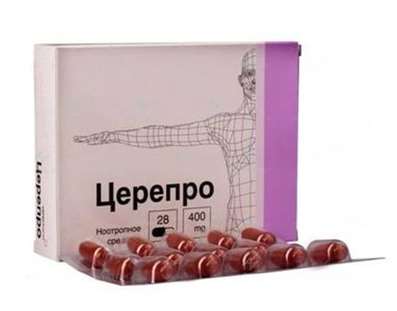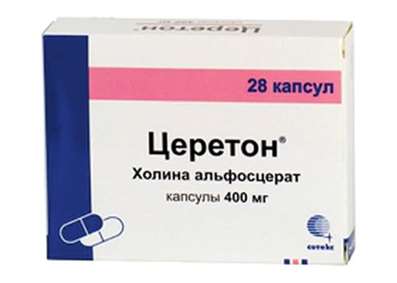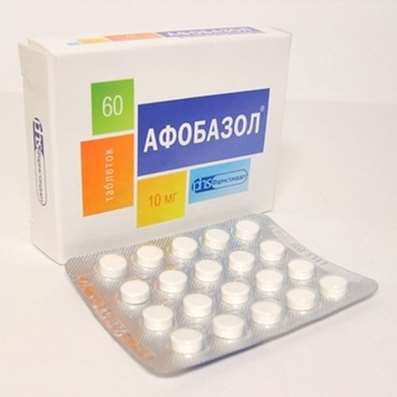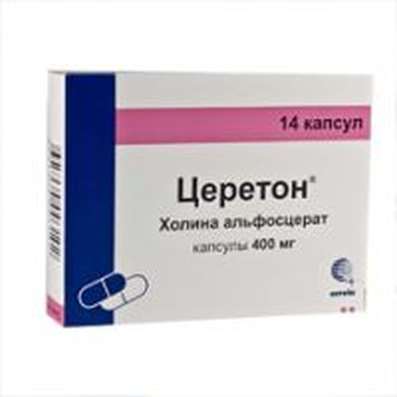Instruction for use: Claritin
I want this, give me price
Dosage form: Tablets; syrup
Active substance: Loratadinum
ATX
R06AX13 Loratadine
Pharmacological groups:
H1-antihistamines
The nosological classification (ICD-10)
H04.9 Illness of lacrimal apparatus, unspecified: Insufficient production of tear fluid; Insufficient lacrimation; Red eye syndrome; Lachrymation; Dryness of the anterior surface of the eye
H06.0 Lesions of a lacrimal apparatus in diseases classified elsewhere
H10.1 Acute atopic conjunctivitis: Allergic conjunctivitis; Allergic eye diseases; Allergic conjunctivitis; Allergic conjunctivitis caused by chemical and physical factors; Allergic rhinoconjunctivitis; Allergic inflammation of the eyes; Spring Qatar; Spring keratitis; Spring conjunctivitis; Conjunctivitis allergic; Year-round allergic conjunctivitis; Exacerbation of pollinosis in the form of rhinoconjunctival syndrome; Acute allergic keratoconjunctivitis; Acute allergic conjunctivitis; Superficial bacterial infection of the eyes; Rhinoconjunctivitis; Seasonal allergic conjunctivitis; Seasonal conjunctivitis; SENSORY; Chronic allergic keratoconjunctivitis; Chronic allergic conjunctivitis
H57.8 Other unspecified diseases of eye and adnexa: Intraocular hemorrhage; Inflammation of the eye; Secondary hyperemia of the eye; Burning sensation in the eyes; Protection of the anterior surface of the eye; Itching in the eyes; Xerosis; Sensation of itching and burning eyes; Dry eye syndrome; Dry eyes; Xerophthalmia
J00 Acute nasopharyngitis [rhinitis]: Viral rhinitis;Inflammation of the nasopharynx; Inflammatory Nose Disease; Purulent rhinitis; Nasal congestion; Nasal congestion due to cold and flu; Difficulty with nasal breathing; Difficulty with nasal breathing for colds; Difficult nasal breathing; Difficult nasal breathing for colds; Nasal hypersecretion; Coryza; ARI with phenomena of rhinitis; Acute rhinitis; Acute rhinitis of various origins; Acute rhinitis with thick purulent-mucous exudate; Acute rhinopharyngitis; Edema of the mucous membrane of the nasopharynx; Rhinitis; Rhinorrhea; Infectious-inflammatory disease of ENT organs;Severe cold; Rhinopharyngitis
J30 Vasomotor and allergic rhinitis: Allergic rhinopathy; Allergic rhinosinusopathy; Allergic diseases of the upper respiratory tract; Allergic rhinitis; Allergic rhinitis seasonal; Vasomotor runny nose; Prolonged allergic rhinitis; All-year-round allergic rhinitis; All-year allergic rhinitis; Year-round or seasonal allergic rhinitis; All-the-year-round rhinitis of an allergic nature; Rhinitis vasomotor allergic; Exacerbation of pollinosis in the form of rhinoconjunctival syndrome; Acute allergic rhinitis; Edema of the nasal mucosa; Edema of the nasal mucosa; Edema of the mucous membrane of the nasal cavity; Swelling of the nasal mucosa; Swelling of the nasal mucosa; Pollinosis; Permanent allergic rhinitis; Rhinoconjunctivitis; Rhinosinusitis; Rhinosinusopathy; Seasonal allergic rhinitis; Seasonal allergic rhinitis; Hay rhinitis; Chronic allergic rhinitis; Allergic diseases of the respiratory tract
J30.1 Allergic rhinitis caused by pollen of plants: Hay fever; Hay fungus; hay fever; Hypersensitivity to pollen of plants; Polyposis allergic rhinosinusitis; Seasonal pollinosis; Seasonal rhinitis
L20 Atopic dermatitis: Allergic diseases of the skin; Allergic skin disease noninfectious etiology; Allergic skin disease etiology nemikrobnoy; Allergic skin diseases; Allergic skin lesions; Allergic reactions on the skin; atopic dermatitis; Allergic dermatosis; Allergic diathesis; Allergic itching dermatosis; Allergic skin disease; Allergic skin irritation; allergic Dermatitis; atopic Dermatitis; allergic dermatoses; exudative diathesis; Itchy atopic eczema Itchy allergic dermatosis; Allergic skin disease; Cutaneous allergic reaction to drugs and chemicals; Cutaneous reactions to medications; Skin and allergic disease; Acute eczema; common neurodermatitis; Chronic atopic dermatitis; Exudative diathesis
L23 Allergic contact dermatitis: Allergic dermatitis;Purulent allergic dermatopathies; Contact allergic reaction; Contact allergic dermatitis; Contact allergic dermatitis; Photoallergic contact dermatitis
L29 Itching: Itching with partial obstruction of the biliary tract; Dermatitis itchy; Dermatosis with persistent itching; Other itching dermatoses; Itching dermatoses; Itching allergic dermatosis; Itching dermatitis; Itching dermatosis; Itching itch; Excruciating itching; Severe itching; Endogenous itching; Skin itching with dermatosis; Restricted itchy dermatitis; Itching of the skin; Itchy scalp; Itching eczema
L29.8 Other itching: Itching of the eye; Itching of the conjunctiva; Itching of the palate; Itching of the nose; Itching of the nasal mucosa; Itchy syringe; Itchy pruritus
L50 Urticaria: Idiopathic chronic urticarial; Injury Urticaria; Chronic urticarial; Hives of the newborn
L50.1 Idiopathic urticaria: Idiopathic urticarial; Chronic idiopathic urticaria
R06.7 Sneezing: Sneezing
T78.4 Unspecified Allergy: Allergic reactions to insulin; Allergic reactions to insect stings; Allergic reactions similar to systemic lupus erythematosus; Allergic diseases; Allergic diseases of mucous membranes; Allergic diseases and conditions resulting from increased release of histamine; Allergic diseases of mucous membranes; Allergic symptoms; Allergic symptoms in the mucous membranes; Allergic reactions; Allergic reactions caused by insect bites; Allergic reactions; Allergic conditions; Allergic laryngeal edema; allergopathy; allergic conditions; Allergy; House dust allergy; Anaphylaxis; Cutaneous reactions to medications; Skin reaction to insect stings; Cosmetic allergy; Drug allergy; Acute allergic reaction; Laryngeal edema allergic genesis and background radiation; Food and drug allergy
Composition
Syrup 1 ml
active substance: Loratadine 1 mg
Auxiliary substances: propylene glycol - 100 mg; Glycerol - 100 mg; Citric acid monohydrate 9.6 mg (or citric acid anhydrous - 8.78 mg); Sodium benzoate - 1 mg; Sucrose (granulated) - 600 mg; Artificial flavor (peach) - 2.5 mg; Purified water - q.s. Up to 1 ml
Tablets - 1 table.
active substance: Loratadine 10 mg
Auxiliary substances: lactose monohydrate - 71.3 mg; Corn starch - 18 mg; Magnesium stearate - 0.7 mg
Description of dosage form
Syrup: clear, colorless or yellowish color, which does not contain visible particles.
Tablets: an oval shape of white or almost white color, not containing extraneous inclusions, on one side there is a risk, the trademark "Cup and flask" and the figure "10", the other side - smooth.
Pharmachologic effect
Mode of action - antiallergic, antipruritic, H1-antihistamine.
Pharmacodynamics
Loratadin, the active substance of the drug ClaritinŽ, is a tricyclic compound with a pronounced antihistamine effect and is a selective blocker of peripheral H1-histamine receptors. It has a fast and prolonged antiallergic effect. The onset of action is within 30 minutes after taking the ClaritinŽ drug inside. The antihistamine effect reaches a maximum after 8-12 hours from the onset of action and lasts for more than 24 hours.
Loratadine does not penetrate the BBB and does not affect the central nervous system. Does not have a clinically significant anticholinergic or sedative effect, i.e. Does not cause drowsiness and does not affect the rate of psychomotor reactions when administered at the recommended doses. The administration of the drug ClaritinŽ does not lead to an extension of the QT interval on the ECG.
With prolonged treatment, there were no clinically significant changes in vital signs, physical examination data, laboratory results, or ECG.
Loratadine has no significant selectivity for H2-histamine receptors. Does not inhibit norepinephrine reuptake and has virtually no effect on CAS or rhythm driver function.
Pharmacokinetics
Loratadine is quickly and well absorbed into the digestive tract. Tmax loratadine in blood plasma is 1-1.5 h, and its active metabolite desloratadine is 1.5-3.7 h. Food intake increases Tmax of loratadine and desloratadine by approximately 1 h, but does not affect the effectiveness of the drug. Cmax of loratadine and desloratadine is not dependent on food intake. In patients with chronic renal disease Cmax and AUC, loratadine and its active metabolite increase in comparison with these indicators in patients with normal renal function. T1 / 2 loratadine and its active metabolite does not differ from that in healthy patients. In patients with alcoholic liver damage, Cmax and AUC of loratadine and its active metabolite increase 2-fold compared to those in patients with normal liver function.
Loratadine has a high degree (97-99%), and its active metabolite - a moderate degree (73-76%) of binding to plasma proteins.
Loratadine is metabolized to desloratadine via the cytochrome P450 3A4 system and to a lesser extent the cytochrome P450 2D6 system. It is excreted through the kidneys (approximately 40% of the ingested dose) and through the intestine (approximately 42% of the ingested dose) for more than 10 days, mainly as conjugated metabolites. Approximately 27% of the ingested dose is excreted through the kidneys within 24 hours after taking the medication. Less than 1% of the active substance is excreted through the kidneys unchanged for 24 hours after taking the drug.
Bioavailability of loratadine and its active metabolite is dose-dependent. The pharmacokinetic profiles of loratadine and its active metabolite in adults and elderly healthy volunteers were comparable.
T1 / 2 loratadine is from 3 to 20 hours (an average of 8.4 hours), and desloratadine - from 8.8 to 92 hours (an average of 28 hours); In elderly patients, respectively, from 6.7 to 37 hours (an average of 18.2 hours) and from 11 to 39 hours (an average of 17.5 hours). T1 / 2 increases with alcoholic damage to the liver (depending on the severity of the disease) and does not change in the presence of CRF.
Conducting hemodialysis in patients with CRF does not affect the pharmacokinetics of loratadine and its active metabolite.
Indication of the Claritin
Seasonal (pollinosis) and all-the-year-round allergic rhinitis and allergic conjunctivitis - symptomatic treatment of sneezing, itching of the nasal mucosa, rhinorrhea, burning and itching in the eyes, lacrimation;
Chronic idiopathic urticaria;
Skin diseases of allergic origin.
Contraindications
Intolerance or hypersensitivity to loratadine or any other component of the drug;
Rare hereditary diseases (violations of galactose tolerance, insufficiency of lactase Lappa or malabsorption of glucose-galactose) - in connection with the presence of lactose, which is a part of tablets; Sugarase / isomaltase deficiency, fructose intolerance, glucose-galactose malabsorption - due to the presence of sucrose, which is part of the syrup;
The period of breastfeeding;
Age to 2 years (for syrup), 3 years (for tablets).
With caution: severe liver dysfunction; Pregnancy (see "Application in pregnancy and lactation").
Application in pregnancy and breastfeeding
Safety of the use of loratadine during pregnancy is not established. The use of the drug ClaritinŽ is only possible if the intended benefit to the mother exceeds the potential risk to the fetus.
Loratadine and its active metabolite are excreted in breast milk, so when prescribing a drug during breastfeeding it is necessary to resolve the issue of its cessation.
Side effects
In clinical studies with children from 2 to 12 years of age who took the drug ClaritinŽ more often than in the placebo group, headache (2.7%), nervousness (2.3%), fatigue (1%) were observed.
In adult clinical trials, adverse events observed more often than with placebo ("pacifiers") were found in 2% of patients taking ClaritinŽ. In adults, the use of ClaritinŽ drug was more frequent than in the placebo group, headache (0.6%), drowsiness (1.2%), increased appetite (0.5%) and insomnia (0.1%) . In addition, in the postmarketing period, there were very rare reports (<1/10000) of dizziness, fatigue, dry mouth, gastrointestinal disorders (nausea, gastritis), allergic reactions in the form of rash, anaphylaxis, including angioedema, alopecia, violation Liver function, palpitation, tachycardia and convulsions.
Interaction
The intake of food does not affect the effectiveness of the drug ClaritinŽ.
The drug ClaritinŽ does not enhance the effect of alcohol on the central nervous system.
With the joint administration of loratadine with ketoconazole, erythromycin, or cimetidine, there was an increase in loratadine concentration in plasma, but this increase was not clinically significant, incl. According to the ECG.
Dosing and Administration
Inside, regardless of meal time.
Adults, incl. Elderly, and adolescents from 12 years: recommended taking ClaritinŽ at a dose of 10 mg (1 table or 2 tsp (10 ml) of syrup) 1 time per day. When using the drug in elderly patients and in patients with CRF, dosage adjustment is not required.
Children from 2 (for syrup) and 3 (for tablets) to 12 years: the dose of ClaritinŽ is recommended to be administered depending on body weight. With a body weight of 30 kg and less - 5 mg (1 tsp (5 ml) syrup) 1 time per day; More than 30 kg - 10 mg (2 tsp (10 ml) syrup or 1 table) once a day.
Adults and children with a body weight of more than 30 kg with severe impairment of liver function, the initial dose should be 10 mg (2 tsp (10 ml) of syrup or 1 tablets) every other day, with a body weight of 30 kg and less - 5 mg (1 Ch.lozhka (5 ml) syrup) every other day.
Overdose
Symptoms: drowsiness, tachycardia, headache. In case of an overdose, immediately consult a doctor.
Treatment: symptomatic and supportive therapy. Possible gastric lavage, intake of adsorbents (crushed activated carbon with water). Loratadine is not excreted by hemodialysis. After providing emergency care, it is necessary to continue monitoring the patient's condition.
Special instructions
Children from 2 to 3 years are recommended to take ClaritinŽ as a syrup.
The drug ClaritinŽ should be discontinued 48 hours before the skin tests, as antihistamines may distort the results of the diagnostic study.
Influence on the ability to drive vehicles and work with machinery. There was no negative effect of the drug ClaritinŽ on the ability to drive a car or perform other activities that require increased concentration of attention. However, in very rare cases, some patients experience drowsiness when taking ClaritinŽ, which may affect their ability to drive vehicles and work with machinery.
Release form
Syrup, 1 mg / ml. In dark glass bottles sealed with aluminum screw caps, having a first opening ring and PE sealing gasket, or polypropylene screw caps having a first opening ring, protection from opening the bottle by children and a PE gasket, 60 or 120 ml. 1 fl. Complete with a plastic spoon-dispenser or a graduated syringe for 5 ml in a cardboard bundle.
Tablets, 10 mg. In blisters made of PVC and aluminum foil, 7, 10 or 15 pcs. 1, 2 or 3 bl. In a cardboard box.
Manufacturer
Schering-Plau N. Labo, Heist-op-den-Berg, Belgium.
The owner of the registration certificate: Schering-Plau N. Labo, Heist-op-den-Berg, Belgium.
Conditions of leave from pharmacies
Without recipe.
Storage conditions of the drug Claritin
At a temperature not higher than 25 ° C
Keep out of the reach of children.
Shelf life of the drug Claritin
Tablets 10 mg - 4 years.
Syrup 1 mg / ml - 3 years.
Syrup 1 mg / ml - 3 years.
Do not use after the expiry date printed on the package.

 Cart
Cart





